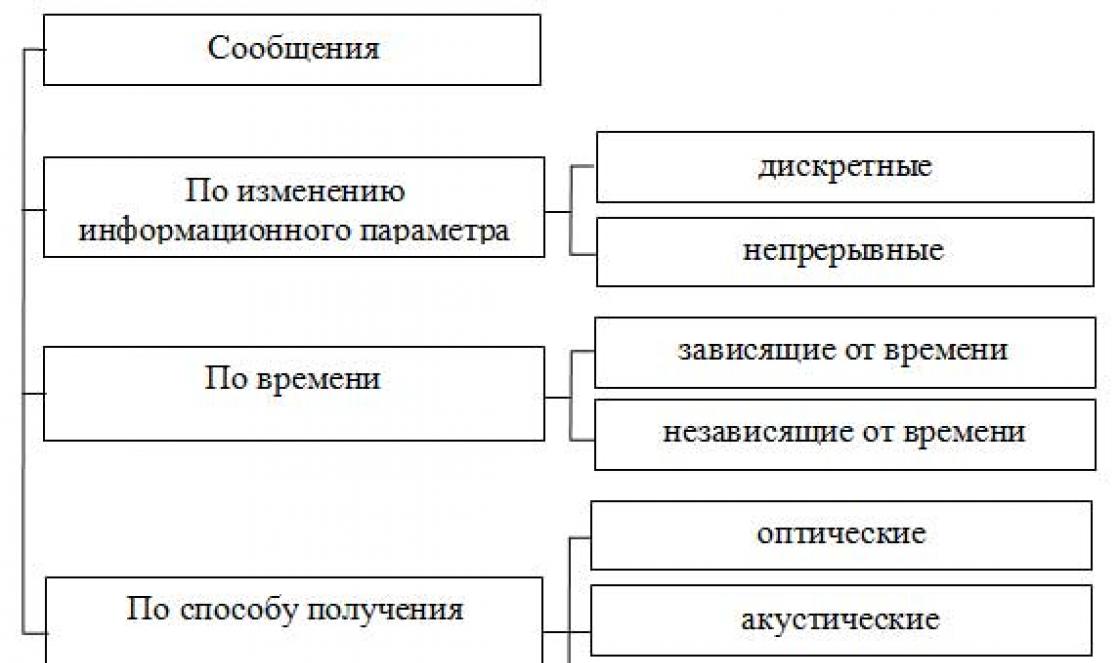Device diagram
The diagram shown in Figure 1 is adjustable stabilizer voltage and allows you to get an output voltage in the range of 1.25 - 30 volts. This allows you to use this stabilizer to power pagers with 1.5 volt power supply (for example Ultra Page UP-10, etc.), and to power 3 volt devices. In my case, it is used to power the “Moongose PS-3050” pager, that is, the output voltage is set to 3 volts.
Circuit operation
Using variable resistor R2, you can set the required output voltage. The output voltage can be calculated using the formula Uout=1.25(1 + R2/R1).
A microcircuit is used as a voltage regulator SD 1083/1084. Without any changes, you can use Russian analogues of these microcircuits 142 KREN22A/142 KREN22. They differ only in output current and in our case this is not significant. It is necessary to install a small heatsink on the microcircuit, since at low output voltage the regulator operates in current mode and heats up significantly even at idle speed.
Device installation
The device is assembled on printed circuit board size 20x40mm. Since the circuit is very simple, I do not provide a drawing of the printed circuit board. Can be assembled without a board using surface mounting.
The assembled board is placed in a separate box or mounted directly in the power supply case. I placed mine in the housing of a 12 volt AC-DC adapter for cordless phones.
Note.
You must first set the operating voltage at the output of the stabilizer (using resistor R2) and only then connect the load.
Other stabilizer circuits.
Switchable stabilizer for 1.5/3 volts on the LM317LZ chip
This is one of the simplest circuits that can be assembled on an affordable chip. LM317LZ. By connecting/disconnecting a resistor in the feedback circuit, we get two different voltages at the output. In this case, the load current can reach 100 mA.

Just pay attention to the pinout of the LM317LZ chip. It is slightly different from the usual stabilizers.
A simple stabilizer on the AMS1117 chip
A simple stabilizer for various fixed voltages (from 1.5 to 5 volts) and current up to 1A. can be assembled on a microcircuit AMS1117-X.X (CX1117-X.X)(where X.X is the output voltage). There are copies of microcircuits for the following voltages: 1.5, 1.8, 2.5, 2.85, 3.3, 5.0 volts. There are also microcircuits with adjustable output designated ADJ. There are a lot of these chips on old computer boards. One of the advantages of this stabilizer is its low voltage drop - only 1.2 volts and the small size of the stabilizer adapted for SMD installation.
It only requires a couple of capacitors to operate. For effective heat removal under significant loads, it is necessary to provide a heat removal pad in the area of the Vout terminal. This stabilizer is also available in a TO-252 package.
It is a 3-pin stabilizer with a constant and fixed output voltage of 5 volts.
Area of application: as a power source for measuring equipment, logic systems, high-quality playback devices and other radio- electronic devices. If necessary, the KR142EN5A stabilizer can be replaced with an analogue - another one.
Main characteristics of KR142EN5A
- Output voltage: 5V
- Output current: 2A
- Maximum input voltage: 15 V
- Input-output voltage difference: 2.5V
- Power dissipation (with heatsink): 10 W
- Output voltage accuracy: 0.05V
Maximum operating values of KR142EN5A:
- Power dissipation: internally limited
- Storage temperatures: -55 … +150С
- Range (operating) temperatures of the crystal: -45 … +125С
Features of the KR142EN5A stabilizer:
- Area correction safe work output transistor
- Internal protection against crystal overheating
- Internal short circuit current limiter


Typical connection diagram KR142EN5A

Of course, the main purpose of the KR142EN5A is a source of constant and fixed voltage of 5 volts, but despite this, this type The stabilizer can also be used as a simple power supply with the function of adjusting the output voltage in the range of 5.6…13 volts. This can be achieved by adding several external components.

The rectified and unstabilized voltage of +15 volts from the diode bridge is supplied to the input (1) of the KR142EN5A stabilizer. The control terminal (2) receives voltage from the output (3) of the stabilizer through transistor VT1. The value of this voltage is set by variable resistor R2. The position of the resistor slider in the upper position determines the minimum voltage value (5.6V) at the output of the regulated power supply
The minimum output voltage of 5.6 V is formed from the standard output voltage of the stabilizer (5V) and the voltage between the emitter and collector (0.6V) of the open transistor VT1.
Capacitance C2 smoothes out ripples, and capacitance C1 protects against possible RF excitation of the microcircuit. The load current of the stabilizer can reach up to 2 A. For normal operation of the stabilizer, it must be placed on a radiator.
We are trying to charge the phone from the crown via the KREN5A chip
Not so long ago, a post “When the battery runs out” popped up on Habré, striking in its illiteracy. Everything would be fine, but this post even managed to end up on home page, as a result, many people read it, and the author criminally misled them. To show the incorrectness of the post, the experiment was repeated with maximum meticulousness: recording currents and voltages. It also explains why this is impossible, and what to do if you really want to charge your phone using batteries.
Welcome to cat.
What is the essence of the problem?
Let's immediately identify the points that ne_kotin indicated in the post, and they are incorrect.
The author says
I want something powerful (1.5 - 2 amperes) and inexpensive - preferably under 100 rubles. So that you can solder on your knee.
And I still have them!
This phrase is the main thing that is misleading and indicates the complete incompetence of the author. Herself...
1 0
Stabilizers KREN 142
KREN stabilizers of the KR142EN5-9 series with a constant positive output voltage in the range of 5-27V are widely used in a wide variety of electronic devices. The voltages that can be obtained using these KREN 142 stabilizers allow them to be used in power supplies for household radio electronics, industrial devices, measuring equipment, etc.
By adding additional elements to typical switching circuits, you can turn these fixed voltage sources into sources with voltage and current regulation. If the KREN 142 stabilizer is located far (the length of the connecting wires is 1 meter or more) from the filter capacitors of the rectifier, then an electrolytic capacitor must also be installed at its input. These stabilizers are analogues of imported stabilizers of the 78xx series.
Scheme KREN 142
A typical KREN 142 stabilizer circuit, as well as the KREN pinout, are shown in the figures.
...0 0
The microcircuit is a voltage stabilizer with a fixed output voltage and overcurrent protection.
Pinout of microcircuit KR142EN5A (KREN5A)
Main characteristics of the KR142EN5A (KREN5A) microcircuit
Typical circuit diagram for switching on the KR142EN5A (KREN5A) microcircuit
For the KR142EN5A (KREN5A) microcircuit, the capacitance of the input capacitor C1 must be at least 2.2 μF for ceramic or tantalum oxide capacitors and at least 10 μF for aluminum oxide capacitors, and the output capacitor C2 must be at least 1 and 10 μF, respectively. The role of the input filter can be played by a smoothing filter capacitor if it is located no further than 70 mm from...
0 0
The commercially produced voltage stabilizer microcircuit of the KR142EN series has a small number of additional parts, is characterized by low cost and good technical characteristics.
These properties have greatly simplified the task of creating stabilized power supplies for electronic devices.
The microcircuit of this series was produced in several modifications: with adjustable and fixed output voltages. The most widely used series is 142EN5...8.
(with a fixed output voltage from 5 to 12 Volts). Moreover, after the digital designation, a letter index was also placed on the microcircuit, indicating the type of parameters.
So, for example, the KR142EN8A microcircuit has a fixed output voltage of 9 Volts,
And KRE142EN8B is already 12 Volts.
Among imported products, it is even simpler: the microcircuit is marked as “7805...7812” with various letter indices in front: KA, KIA, AN, etc. The last two digits...
0 0
Application of microcircuit stabilizers series 142, K142, KR142 (KREN)
142EN1, 142EN2, 142EN3, 142EN4
A. Shcherbina, S. Baltiy, V. Ivanov
In recent years, integrated voltage stabilizers have become widespread. Power supplies based on them are distinguished by a small number of additional parts, low cost and good technical characteristics. It has become possible to equip each board of a complex device with its own voltage stabilizer (SV), and therefore use a common unstabilized source to power it. This significantly increased the reliability of such devices (failure of one voltage supply leads to failure of only the unit that is connected to it), and largely eliminated the problem of dealing with interference on long power wires and impulse noise generated by transient processes in these circuits. Currently, the industry produces a wide range of microcircuits of the 142, K142 and KR142 series. They include...
0 0
If a non-standard value of a stabilized output voltage or its smooth regulation is required, it is convenient to use specialized adjustable microcircuit stabilizers that maintain a voltage of 1.25 V between the output and the control pin. Their list is presented in table. 2, and a typical connection diagram for stabilizers with a control element in the positive wire is in Fig. 3. Resistors R1 and R2 form an external adjustable voltage divider, which is included in the circuit for setting the output voltage level Uout equal to Uout=1.25(1+R2/R1)+Ipot*R2, where Ipot=50...100 μA - own current consumption of the microcircuit. The number 1.25 in this formula is the above-mentioned voltage between the output and the control terminal, which maintains the stabilizer in operating mode.
Please note that, unlike stabilizers for a fixed output voltage, adjustable...
0 0
Catalog amateur radio circuits.
When you don’t want to think, a microcircuit comes to the rescue. (Ode to ROLL12).
Evgeny Merzlikin. (Things of days gone by.)
When you don’t really want to think and choose a stabilizer circuit, a microcircuit comes to the rescue. There are many stabilizers in integral design, but the classic is KR142EN12 (Fig. 1). Three-pin case, classic TO220. If you need a complementary pair, put KR142EN18. Microcircuits are manufactured by NPO Elektronika, Voronezh.
Pdis=(Uin-Uout)/Iout.max
The input voltage is about 38 V (for KREN18 a little lower). The output current is about 1 A (Don’t forget Pras max = 10 W!!!). A bunch of built-in protections, including current and overheating.
The circuit diagram of the connection is very simple (Fig. 2).
Resistor R sets the output voltage. It is calculated based on...
0 0
Microcircuit voltage stabilizers for wide application (KREN and analogues)
MICROCIRCUIT VOLTAGE STABILIZERS FOR WIDE APPLICATION (KREN AND ANALOGUES)
One of the important components of electronic equipment is the voltage stabilizer in the power supply. More recently, such units were built on zener diodes and transistors. The total number of stabilizer elements was quite significant, especially if it was required to regulate the output voltage, protect against overload and output short circuit, and limit the output current at a given level.
With the advent of specialized microcircuits, the situation has changed. Manufactured microcircuit voltage stabilizers are capable of operating over a wide range of output voltage and current, and often have a built-in protection system against overcurrent and overheating - as soon as the temperature of the microcircuit crystal exceeds the permissible value, the output current is limited.
Currently, the range of domestic...
0 0
7.8 Voltage stabilizers on KR142 series microcircuits
The integrated voltage stabilizers of the KR142 series produced by the domestic industry make it possible to obtain stabilized voltages in a fairly large range using simple circuit methods - from a few volts to several tens of volts. Let's look at some circuit solutions that may be of interest to radio amateurs.
The KR142EN5A microcircuit is an integrated stabilizer with a fixed output voltage of +5 V. A typical connection circuit for this microcircuit has already been presented in the book (see.
rice. 105). However, by slightly changing the connection circuit, it is possible to build a stabilizer on the basis of this microcircuit with an adjustable output voltage in the range from 5.6 V to 13 V. The circuit is shown in Fig. 148.
The input of the integrated stabilizer (pin 17 of the DA1 chip) receives an unstabilized voltage of +16 V, and pin 8 receives a signal from the output...
0 0
Three-terminal voltage stabilizers are either fixed or adjustable. The first ones are designed for a specific output voltage (in our case, 5 V). The second are adjustable stabilizers, which allow you to set the required voltage within the stated limits.
If you do not need to limit the output parameters or configure the signal to non-standard parameters, then pay attention to the KREN 142 fixed voltage stabilizer, which will allow you to use fewer parts and therefore will be the best choice.
Scheme KREN 142
How to choose a current stabilizer? The device should be selected with a rating fairly close to the maximum possible current in the circuit. If the stabilizer is lightly loaded, then stability is often not all right. However, the scheme must be selected optimally and useful in every sense. That is rated current with a large margin is also useless, since the short circuit current will also be too large to protect the circuit.
Typical connection diagram KR142en5a
The KR142en5a series stabilizer with a constant positive output voltage of 5 V is widely used in a wide variety of electronic devices. Its scope of use is as a power source for logical systems, high-precision reproduction devices and other radio-electronic devices. Electrical diagram KR142EN5A is shown in the figure below.
Capacities C1, C2 play a corrective role. C2 is designed to smooth out ripple, and C1 is to protect against possible high-frequency excitation of the microcircuit. The load current of the stabilizer is rated up to 2 A.
If you add auxiliary parts to the circuit, you can convert it into a voltage-regulated source. When KREN 142 is located remotely (with a length of connecting wires of one meter or more) from the filtering capacitors of the rectifier, a capacitor should be connected to its input. An external divider is used to regulate the output voltage. For proper operation of the device, the use of an additional radiator will be required. These models are analogues of imported regulators of the 78xx series.
Pinout and connection diagram
The KR142en5a microcircuit is designed for a maximum current of 5 A, and it can provide it. But excess current threatens to damage the device. Below is an option for turning on the microcircuit. It is allowed to install the microcircuit twice and dismantle it once.

The circuit is fastened to the printed circuit board by unsoldering the case pins, see the pinout of the microcircuit in the figure.

Stabilizer characteristics
The kr142en5a microcircuit is a compensation-type stabilizer with an adjustable output voltage of positive polarity.
Key Features:
- overheat protection;
- short circuit current limitation;
- weight no more than 1.4 g;
- dimensions 14.48x15.75 mm.
Limit values of operating mode parameters and environmental conditions:
- Storage temperature -55 ... +150 C;
- Crystal temperature in operating mode -45 ... +125 C.
Roll stabilizer8b
Currently, integrated voltage stabilizers are quite widespread. Power supplies using such stabilizers have a small number of additional elements, low cost and have excellent technical characteristics. The linear roll stabilizer 8b is one of the most common domestically produced options, which is an analogue of the imported stabilizers of the 78xx line.

Stabilizer action
The KR1428B stabilizer makes it possible to supply each board of a complex device with a separate stabilizing device and use a common source that is not provided with stabilization to power it.
Since the failure of one of the stabilizers leads to the failure of only the unit connected to it, this increases the overall reliability of the devices. Also, this connection scheme was able to solve the problem of combating pulsed noise and interference from long supply wires.

You should be aware that exceeding the current value for which the device is designed may result in failure of the stabilizer. However, modern stabilizers have current protection - if the maximum current load is exceeded, they simply turn off.
The disadvantages of linear stabilizers include strong heating under increased load. Thus, an increase in the input voltage entails overheating of the stabilizer. When developing the Kren8b stabilizers, this problem was solved by providing overheating protection.

Specifications:
- The KR1428B stabilizer has the following characteristics:
- permissible output current 1 Ampere;
- presence of internal thermal protection;
- protected output transistor;
- no need for external components;
- internal limitations of short circuit currents.
Application
Such a stabilizer can be used in devices such as:
- in radio-electronic devices as a power source for logical systems;
- in high quality playback devices;
- in measuring instruments.
By adding additional elements to typical circuits, you can turn the stabilizer from a voltage source into a source with regulation of both voltage and current.

If the length of the connecting wires of the stabilizer with filtering rectifier condensates exceeds 1 meter, then an electrolytic capacitor must be installed at its input.

Choosing a linear stabilizer Kren1428b will help solve the problem of voltage stabilization in a wide range of radio-electronic and other devices and will extend the life of the devices.

The 12-volt bank voltage stabilizer, located in the power supply, is an important component of radio-electronic technology. Not so long ago, such units were based on zener diodes and transistors, which were replaced by specialized microcircuits.

The advantages of such circuits are the ability to operate in wide ranges of output current and output voltage, as well as the presence of a system that protects against overloads. electric current and overheating - if the permissible temperature value of the microcircuit crystal is exceeded, the output current is stopped.
Specifications

The main characteristics of the 12 volt roll stabilizer include:
- no need for additional external components;
- availability internal system thermal protection;
- the presence of a protective circuit for the output transistor;
- internal short circuit current limiters;
- lightness and small dimensions.
The output current in roll stabilizing devices 12 can be 1 or 1.5 A, maximum voltage– 30 or 35 V. The difference between the input voltage and the output voltage in such stabilizers is always the same and amounts to 2.5 V.
KR142EN12A

The KR142EN12A stabilizer and its analogue LM317 are adjustable stabilizing devices of the compensation type. They work with an external voltage divider in the measurement element, which allows regulation of the output voltage in the range of 1.3 V - 37 V.
The control element is located in the positive power wire. The load current limit does not exceed 1 A.
These stabilizers are considered the most “high-voltage” in the K142 line and are highly resistant to pulsed power overloads. They also have a system that protects against output overcurrent.

The device is protected by a plastic housing with a built-in extended flange for heat dissipation. The mass of such devices does not exceed 2.5 g.
Application
12V stabilizers are widely used in circuits of electronic devices as components of their power supply sources. It can be household and measuring technology, electronic equipment and other structures.
These stabilizers are also used by car enthusiasts when it is necessary to limit the battery charging current, check the power source, and install LED strips in car headlights to avoid frequent LED burnout.
The simplicity of the circuit design of the stabilizer makes it easy to use even for the average person who does not have special knowledge.
Conclusion
A KREN type stabilizer is a radio-electronic product, the main purpose of which is to equalize the output voltage. The device is equipped with current protection, which turns off the device when the threshold current in the load is exceeded, and overheating protection. The microcircuit has a low cost and good technical characteristics.





